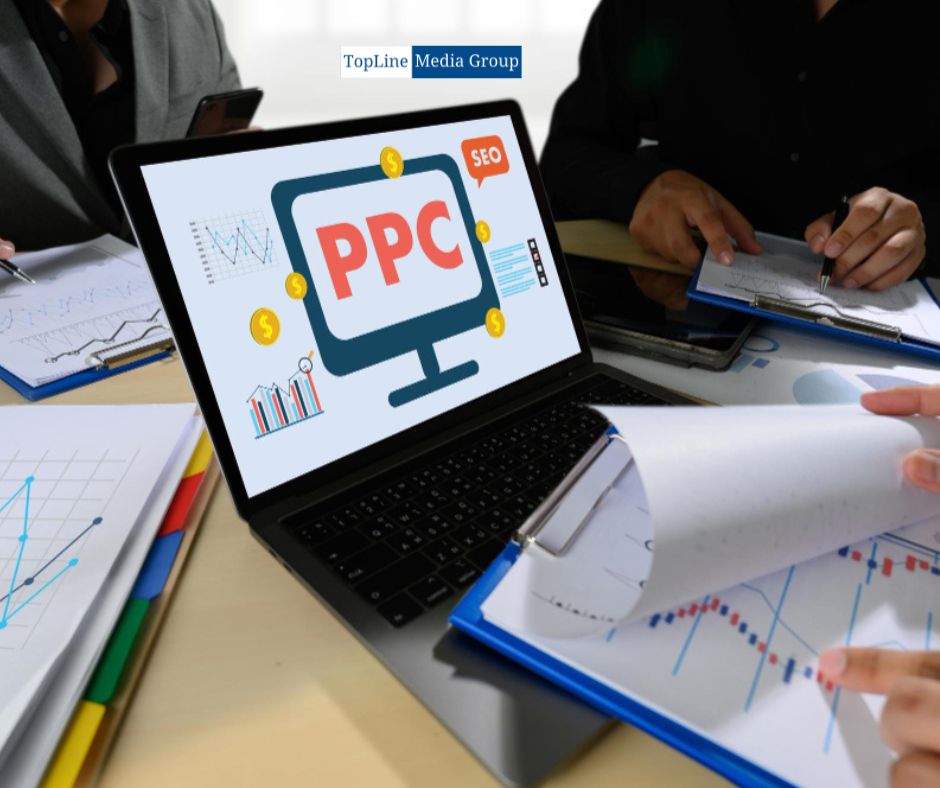In today’s digital landscape, businesses strive to maximize their return on investment (ROI) through various marketing channels. Pay-per-click (PPC) advertising has emerged as a powerful tool for reaching potential customers online. Unlike traditional advertising methods, PPC allows advertisers to target specific demographics, interests, and behaviors, maximizing the effectiveness of their campaigns. In this article, we will explore how businesses can leverage targeted PPC campaigns to optimize their ROI.
Understanding Pay-Per-Click Advertising:
PPC advertising is a form of online advertising in which advertisers pay a fee each time their ad is clicked. It allows businesses to display ads on platforms like Google and Bing and social media networks such as Facebook, Instagram, and LinkedIn. The critical advantage of PPC advertising is that it offers instant visibility to a targeted audience, driving relevant traffic to a website or landing page.
Maximizing ROI with Targeted Campaigns:
Define Your Target Audience: Before launching a PPC campaign, it’s crucial to define your target audience. Understand their demographics, interests, and online behavior. This information will help you create highly targeted ads that resonate with your audience.
Keyword Research:
Conduct thorough keyword research to identify the terms and phrases your target audience is searching for.
Use tools like Google Keyword Planner, SEMrush, or Ahrefs to discover relevant keywords with high search volume and low competition.
Incorporate these keywords into your ad copy and landing pages to improve relevance and quality score.
Ad Copy Optimization: Craft compelling ad copy that speaks directly to your target audience’s pain points and needs. Highlight unique selling points, offers, and benefits to entice users to click on your ads. Use strong calls-to-action (CTAs) to prompt action, such as “Shop Now,” “Learn More,” or “Sign Up Today.”
Landing Page Optimization:
Ensure that your landing pages are optimized for conversion.
Design them with a clear and concise layout, relevant content, and a prominent CTA.
Make sure the landing page matches the ad’s messaging and provides a seamless user experience from click to conversion.
Segmentation and Targeting:
Segment your audience based on demographics, interests, location, device, and past behavior.
Create separate ad groups or campaigns for each segment to deliver highly relevant ads.
Utilize targeting options such as geographic targeting, device targeting, and remarketing to reach the right audience at the right time.
A/B Testing:
Test different ad creatives, headlines, CTAs, and landing page elements to identify what resonates best with your audience.
Conduct A/B tests regularly to optimize ad performance and maximize ROI.
Analyze the results and make data-driven decisions to refine your campaigns further.
Monitor and Optimize Campaigns:

Continuously monitor the performance of your PPC campaigns.
Track key metrics such as click-through rate (CTR), conversion rate, cost per acquisition (CPA), and return on ad spend (ROAS).
Identify underperforming ads or keywords and make adjustments to improve performance.
Regularly optimize your campaigns based on data insights to achieve better results over time.
Budget Management: Effective budget management is essential for maximizing ROI in PPC advertising. Based on performance and potential ROI, set realistic budget allocations for each campaign, ad group, and keyword. Monitor your spending closely and adjust bids and budgets accordingly to prioritize high-performing campaigns and keywords.
Utilize Ad Extensions: Take advantage of ad extensions to enhance your ads and provide additional information to users. Ad extensions such as site links, callouts, and structured snippets can improve ad visibility, give more context to your offerings, and encourage users to engage with your ads. Experiment with different ad extensions to see which ones resonate best with your audience and drive higher click-through rates.
Stay Updated with Trends and Changes: The digital advertising landscape is constantly evolving, with new trends, features, and algorithm changes being introduced regularly. Stay informed about industry trends, updates to advertising platforms, and changes in user behavior to adapt your PPC strategies accordingly. Keeping abreast of these developments will help you stay ahead of the competition and maintain a competitive edge in your PPC campaigns.
Invest in Remarketing Campaigns: Implement remarketing campaigns to re-engage users who have previously interacted with your website or shown interest in your products or services. By targeting these warm leads with tailored ads, you can encourage them to revisit your site and complete a desired action, such as making a purchase or signing up for a newsletter. Remarketing campaigns often yield higher conversion rates and ROI compared to standard PPC campaigns targeting cold audiences.
Track and Analyze Conversion Paths: Understand the customer journey and track the various touchpoints that lead to conversions. Analyze conversion paths to identify the most effective channels, campaigns, and keywords that drive conversions. This insight will help you allocate your budget more efficiently, invest in high-performing channels, and optimize your PPC campaigns for maximum ROI.
Implement Conversion Tracking: Set up conversion tracking to measure the success of your PPC campaigns accurately. Track meaningful actions such as form submissions, purchases, phone calls, or email sign-ups to attribute conversions to specific ads and keywords. Conversion tracking provides valuable data that enables you to optimize your campaigns, allocate budget effectively, and focus on driving actions that align with your business goals.
Continuous Learning and Optimization: PPC advertising is a dynamic and iterative process that requires constant learning and optimization. Stay curious, experiment with new strategies and tactics, and be willing to adapt based on performance data and insights. Test new ad formats, targeting options, and bidding strategies to uncover opportunities for improvement and maximize ROI in your PPC campaigns.
Conclusion
In conclusion, maximizing ROI with targeted PPC campaigns requires a strategic approach, diligent optimization, and a commitment to ongoing improvement. By understanding your audience, optimizing your ad creatives and landing pages, managing your budget effectively, and staying informed about industry trends, you can achieve significant returns on your PPC investment and drive sustainable growth for your business. Ready to supercharge your PPC campaigns and maximize your ROI? Contact us today at TopLine Media Group to get started!
FAQs
What is Pay-Per-Click (PPC) Advertising?
Pay-per-click advertising is an online advertising model where advertisers pay a fee each time their ad is clicked. It’s a method of driving traffic to websites where advertisers bid for ad placement in a search engine’s sponsored links when someone searches for a keyword related to their business.
How does PPC advertising differ from traditional advertising methods?
Unlike traditional advertising methods where you pay a fixed cost regardless of performance, PPC advertising allows you to pay only when someone interacts with your ad, such as clicking through to your website. This makes it more cost-effective and measurable, as you can track exactly how many clicks, conversions, and sales your ads generate.
What are the key benefits of targeted PPC campaigns?
Targeted PPC campaigns allow businesses to reach specific audiences based on demographics, interests, and behaviors. This maximizes the effectiveness of campaigns by ensuring that ads are shown to people who are most likely to be interested in the products or services being offered. Targeting also helps to minimize wasted ad spend on irrelevant clicks.
How can businesses define their target audience for PPC campaigns?
Before launching a PPC campaign, it’s essential to conduct market research to understand your target audience’s demographics, interests, and online behavior. This information will help you create highly targeted ads that resonate with your audience and increase the likelihood of engagement and conversions.
What is keyword research, and why is it vital for PPC campaigns?
Keyword research involves identifying the terms and phrases that your target audience is searching for on search engines. By conducting keyword research, businesses can discover relevant keywords with high search volume and low competition, which can then be incorporated into ad copy and landing pages to improve relevance and quality score, ultimately leading to better ad performance and ROI.
How can businesses optimize their ad copy for better performance?
Businesses can optimize their ad copy by crafting compelling messages that speak directly to their target audience’s pain points and needs. This involves highlighting unique selling points, offers, and benefits and including strong calls to action (CTAs) to prompt action.
What are some best practices for landing page optimization in PPC campaigns?
Landing page optimization involves designing landing pages with clear and concise layouts, relevant content, and prominent CTAs. It’s essential to ensure that landing pages match the ad’s messaging and provide a seamless user experience from click to conversion, ultimately improving the likelihood of conversions and maximizing ROI.
How can businesses effectively manage their PPC campaign budgets?
Effective budget management involves setting realistic budget allocations for each campaign, ad group, and keyword based on their performance and potential ROI. Businesses should monitor their spending closely and adjust bids and budgets accordingly to prioritize high-performing campaigns and keywords, ultimately maximizing ROI while minimizing wasted ad spend.
What are ad extensions, and how can businesses utilize them in PPC campaigns?
Ad extensions are additional pieces of information that can be added to PPC ads to provide more context and encourage users to engage. Examples of ad extensions include site links, callouts, and structured snippets. By utilizing ad extensions, businesses can improve ad visibility and drive higher click-through rates, ultimately maximizing ROI.
How important is continuous learning and optimization in PPC advertising?
Continuous learning and optimization are crucial in PPC advertising as the digital advertising landscape is constantly evolving. By staying curious, experimenting with new strategies and tactics, and being willing to adapt based on performance data and insights, businesses can uncover opportunities for improvement and maximize ROI in their PPC campaigns.




